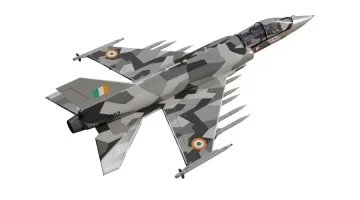- Views: 764
- Replies: 1
A former chief of BrahMos Aerospace, Dr. Sudhir Kumar Mishra, has issued a strong call for India to increase exports of its premier BrahMos supersonic cruise missile.
Speaking at a recent defence conclave, he argued that such sales are strategically critical for funding the development of advanced future versions of the missile and ensuring it remains a step ahead of the sophisticated air defence systems being developed by adversaries.
Dr. Mishra, who previously served as the CEO and Managing Director of the joint venture, stressed that international sales provide more than just economic returns.
He stated that these exports are essential for financing the crucial research and development needed to create newer variants that can overcome evolving threats and advanced interception technologies on the future battlefield.
The BrahMos missile is a product of a collaboration between India's Defence Research and Development Organisation (DRDO) and Russia's NPO Mashinostroyeniya.
It is globally recognised as one of the fastest cruise missiles, capable of reaching speeds of Mach 3, or three times the speed of sound.
Deployed by all three branches of the Indian armed forces, the missile, with a range between 290 and 450 kilometres, serves as a cornerstone of the nation's military deterrence.
In a significant step towards becoming a major defence exporter, India is actively promoting the BrahMos system to friendly nations.
The most notable success has been a landmark $375 million agreement with the Philippines for shore-based anti-ship missile batteries, with deliveries already underway.
Several other nations, particularly in Southeast Asia and Latin America, have also expressed formal interest in acquiring the versatile weapon system, drawn to its high speed and precision. This aligns with India's ambitious target of achieving ₹35,000 crore in annual defence exports by 2025.
The revenue generated from these international contracts is indispensable for the continuous evolution of the BrahMos platform.
Dr. Mishra warned that as potential adversaries invest in multi-layered missile defence shields and hypersonic weapons, India cannot afford to stand still. He emphasised that sustained investment is the only way to ensure the BrahMos remains exceptionally difficult to intercept for years to come.
"There is no weapon that is invincible," Dr. Mishra acknowledged, highlighting the need for proactive innovation. "The goal is to make it as difficult as possible for anyone to intercept BrahMos, even ten or fifteen years down the line. For that, we must invest in next-gen propulsion, stealth, and terminal manoeuvrability—and that requires money."
Looking to the future, BrahMos Aerospace is developing several advanced versions of the missile.
These include a new BrahMos-NG (Next Generation) which is lighter and can be fitted on more aircraft, an extended-range variant capable of striking targets beyond 800 km, and a hypersonic version, the BrahMos-II, which aims to travel at speeds greater than Mach 7.
These upgrades are designed to significantly enhance India's strategic strike capabilities and maintain its technological edge in a rapidly changing security environment.



